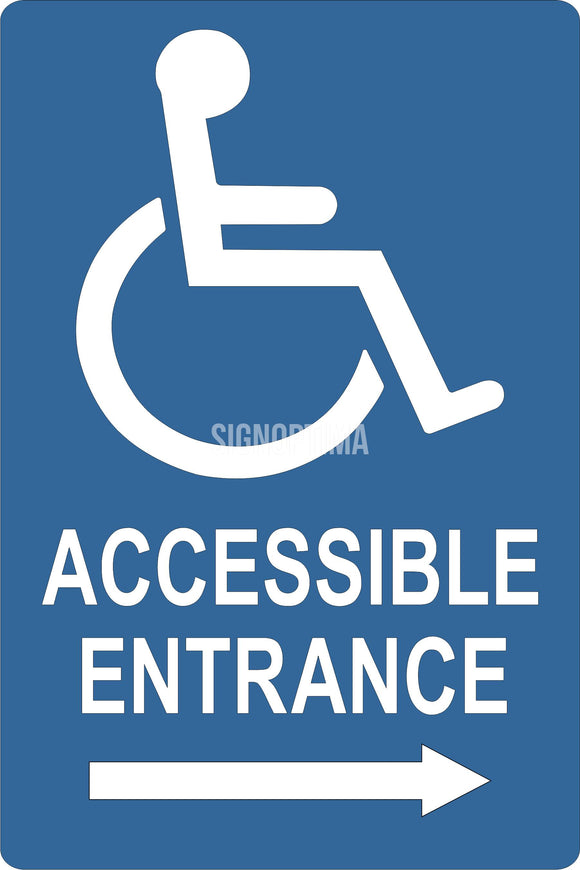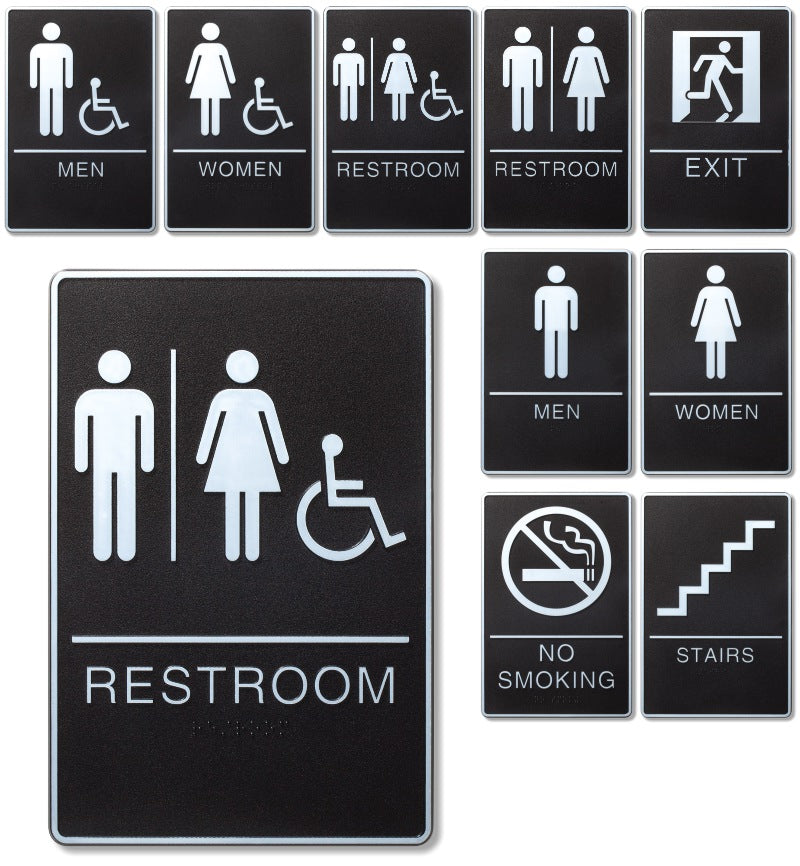Tailoring ADA Signs to Fulfill Your Particular Requirements
Tailoring ADA Signs to Fulfill Your Particular Requirements
Blog Article
ADA Signage: Making Sure Availability and Compliance in Public Spaces
ADA signage plays a crucial role in ensuring availability and conformity within public areas, considerably contributing to a comprehensive setting for individuals with specials needs. As we explore the nuances of ADA signage, from responsive attributes to make ins and outs, it's vital to think about exactly how these aspects integrate to support the rights of all individuals.
Importance of ADA Signs
In modern-day society, the importance of ADA signs extends beyond plain conformity with lawful requireds to symbolize a commitment to inclusivity and accessibility for all people. These indicators are necessary in developing environments where people with disabilities can navigate public spaces with the exact same convenience and freedom as those without specials needs. By providing standardized and clear information, ADA signs guarantees that every person can access facilities, solutions, and information without obstacles.
The importance of ADA signage depends on its capacity to enhance the quality of life for people with specials needs by promoting equivalent accessibility. It removes the challenges that could or else impede their capacity to take part totally in community life. Additionally, these indicators function as noticeable indicators of a company's devotion to variety and equality, mirroring more comprehensive societal worths that promote the rights and self-respect of all individuals.
Furthermore, ADA signage plays an essential duty in public security. By leading individuals to leaves, toilets, and various other important facilities, it guarantees that all individuals, no matter physical capacity, can evacuate safely throughout emergency situations. In recap, ADA signage is not just a governing need yet an effective tool for promoting a comprehensive and equitable society.
Trick Elements of Compliance

Positioning is crucial; indicators have to be set up in locations that are obtainable and quickly noticeable. Commonly, signage ought to be placed in between 48 and 60 inches from the ground to guarantee availability for both standing and wheelchair users. Responsive elements, such as Braille, are essential for individuals with aesthetic impairments, providing vital information in a non-visual style.
High-contrast shades in between the message and background are required to enhance readability for people with reduced vision. The ADA mandates specific comparison ratios to ensure clearness. In addition, personality size is an essential consideration, with minimum height demands determined by the seeing distance to make certain readability from different angles.
Layout Factors To Consider for Accessibility
Creating available signs requires a meticulous method to guarantee it satisfies the demands of all users, particularly those with specials needs. This entails considering different style aspects that enhance readability and functionality. Trick variables consist of the option of font, color comparison, and tactile features. Typefaces should be sans-serif, with basic and clear letterforms, to facilitate easy analysis. The dimension of the text is equally critical, with ADA standards suggesting a minimum elevation based upon viewing range to ensure readability.
Contrasting colors between message and background are essential for presence, specifically for individuals with visual problems. A high comparison ratio helps identify the text from its history, boosting readability under different lighting problems. Additionally, tactile components, such as Braille and raised personalities, are vital for people who are blind or have reduced vision. These components need to be located at a constant elevation and setting to guarantee easy accessibility and understanding.
Moreover, the placement of signs plays a considerable role in access. Indications should be set up in areas that are unobstructed and quickly reachable. Making sure that signage is placed at ideal heights and angles allows all individuals, including those making use of wheelchairs, to engage with them effectively.
Common Errors to Prevent

Another prevalent error is the wrong positioning of signs. ADA guidelines specify exact elevation and area requirements to make sure that indicators are reachable and conveniently visible by all individuals, including those making use of mobility devices. Neglecting these guidelines not just interferes with ease of access however additionally risks non-compliance with legal requirements.
In addition, inadequate comparison between message and background is a constant oversight. Sufficient comparison is essential for readability, specifically for individuals with low vision. Designers occasionally select shades that are visually appealing however do not have the necessary comparison, rendering the message tough to discern.
Finally, some designers fall short to incorporate tactile aspects, such as Braille, which are critical for individuals who are blind. basics Omitting these attributes not only causes non-compliance with ADA guidelines but additionally restricts gain access to for a segment of the populace that counts on tactile info.
Future Trends in Signage
Developments in innovation and boosting understanding of inclusivity are forming the future patterns in signs layout. As culture becomes a lot more mindful of diverse requirements, the assimilation of wise modern technologies right into signs is obtaining traction. Digital signage, for example, is progressing to consist of interactive attributes and real-time updates, which can be important in giving vibrant information in public spaces. These indicators typically include touch screens or gesture-based controls, making it possible for customers to navigate material tailored to their specific requirements.
An additional arising trend is the use of enhanced fact (AR) to boost user experience. AR-enabled signs can overlay electronic info onto the physical atmosphere, providing visually damaged individuals with auditory or haptic comments. ADA Signs. This modern technology not just boosts ease of access however additionally develops an interesting experience for all individuals
Sustainability is likewise a substantial factor influencing signage patterns. Environment-friendly products and energy-efficient lighting options are being focused on to straighten with worldwide ecological goals. In addition, advancements in materials scientific research are causing the development redirected here of even more weather-resistant and sturdy indicators.
Conclusion
ADA signs plays a vital role in ensuring access and conformity within public spaces webpage by integrating tactile components, high-contrast colors, and calculated positioning. The adherence to ADA requirements not just promotes safe navigation for individuals with disabilities yet likewise represents an organization's devotion to variety and inclusivity. By staying clear of usual errors and welcoming future fads, public spaces can continue to advance these worths, making sure that the rights and dignity of all people are appreciated and supported.
ADA signs plays an indispensable function in guaranteeing availability and compliance within public rooms, substantially contributing to a comprehensive setting for individuals with disabilities. As we check out the nuances of ADA signage, from tactile attributes to create details, it's critical to think about how these components coalesce to promote the legal rights of all customers.In modern society, the significance of ADA signs extends past mere compliance with lawful mandates to embody a commitment to inclusivity and ease of access for all individuals. By providing clear and standard info, ADA signage ensures that every person can access facilities, services, and information without obstacles.
ADA signage plays an essential role in guaranteeing accessibility and conformity within public spaces by including tactile aspects, high-contrast shades, and calculated positioning. (ADA Signs)
Report this page